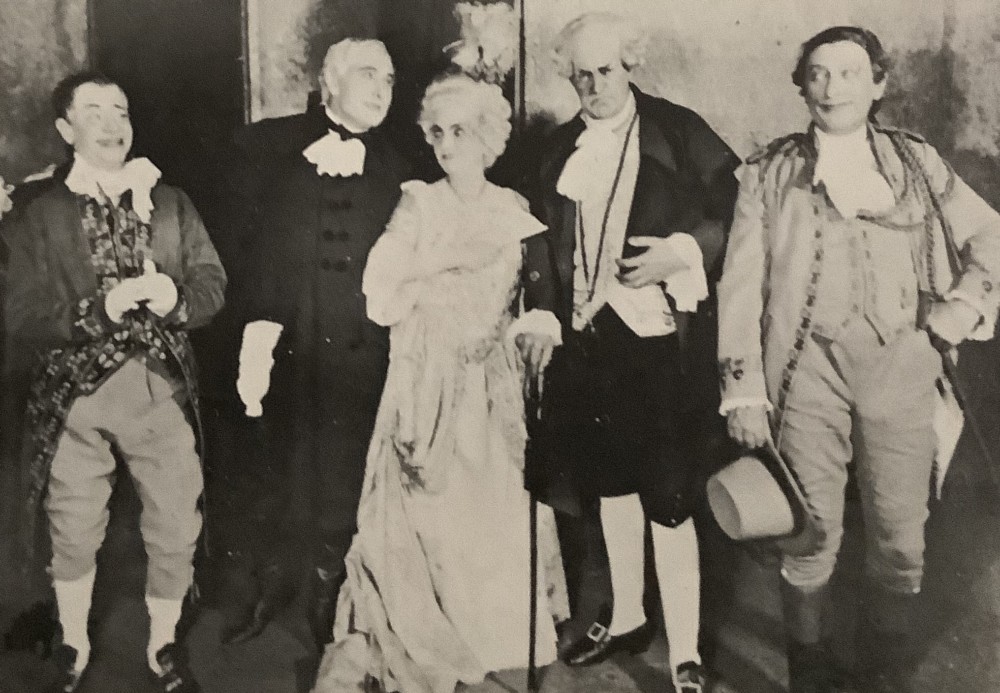 |
| Mari Gorman, Antony Tenuta, Zane Lasky, Jonathan Hogan, Trish Hawkins, Rob Thirkield, Helen Stenborg. |
THE HOT L BALTIMORE
[Comedy-Drama/Hotel/Prostitution] A: Lanford Wilson; D: Marshall W. Mason; S:
Ronald Radice; C: Dina Costa; P: Kermit Bloomgarden and Roger Ailes in the
Circle in the Square Production; T: Circle in the Square (OB); 3/22/73-1/4/76
(1,166)
 |
| Zane Lasky, Mari Gorman. |
The then four-year-old Circle Theatre Company (later called
the Circle Repertory Company), which produced the original version of the play,
soon became one of New York’s finest Off-Broadway resident companies. Lanford
Wilson continued to provide them with his finest new plays, several of them
moving to respected Broadway productions. The present work had begun life
Off-Off Broadway in the Circle’s tiny uptown space, but was soon transferred to
a commercial run at the old, downtown Circle in the Square, on Bleecker Street,
where it became one of Off Broadway’s greatest successes. Later, it became the
basis for a short-lived though critically valued TV show.
 |
| Trish Hawkins, Judd Hirsch. |
The Hot L Baltimore
takes place on Memorial Day in a seedy, once-respectable Baltimore hotel. The “E” in
the word “HOTEL” in its electric sign has gone blank, providing the play with its
unusual title. There is not much plot, just the closely observed activities and
behavior of the transients and permanent residents of this faded edifice, now
slated for the wrecker’s ball. On view in the shabby lobby are the grumpy young
night clerk, Bill (Judd Hirsch), several warmhearted hookers (Trish Hawkins,
Conchatta Ferrell, Stephanie Gordon), a grouchy old man (Rob Thirkield), a
dreamy old spinster (Helen Stenborg), a boyish, tough, but vulnerable young
woman (Mari Gorman), her high-strung younger brother (Zane Lasky), a youth
searching for a vanished grandfather (Jonathan Hogan), and several others,
suitably eccentric.
 |
| Trish Hawkins, Conchatta Ferrell, Stephanie Gordon. |
Sentimental, nostalgic for a vision of an America that one
hopes may once have been, these characters pass before our eyes with a blend of
humor, cynicism, and love that transforms them into a realistic but poetic
cross-section of a specific American milieu.
The ensemble production was, for most, a significant
contribution that proved the value of having a resident playwright create roles
for actors with whom they are closely familiar. The detailed and telling
realism of Marshall W. Mason’s staging—Mason directed most of Wilson’s new
plays—was perfectly suited both to the play and to the talents of the actors. Hirsch,
Ferrell, Hogan, Hawkins, and, especially, Gorman, may have been singled out by
the critics, but the company as a whole was considered superlative by nearly
everyone.
The realism of The Hot
L Baltimore, its humanity, sensitivity, comedy, and emotionality, were
potent factors in its long-run success. Some objected that it was too long and
tended to ramble, some thought its sentimentality overdone, and some declared
Wilson’s focus diffuse. But the consensus, as expressed by Harold Clurman, was
that “Wilson’s writing is salty and vivid; his observation accurate and
compassionate.” Clive Barnes noted the The
Hot L Baltimore “is an easy play to love. . . . Mr. Wilson is both funny
and sad about today, and the combination is unbeatable.”
The Hot L Baltimore walked
off with the New York Drama Critics Award for Best American Play, and an OBIE
as Best Play. Mari Gorman landed the OBIE for Distinguished Performance, a
Theatre World Award, and a Drama Desk Award for Outstanding Performance. Trish
Hawkins received a Drama Desk Award for Most Promising Performer, as well as a
Theatre World Award, while Marshall W. Mason won an OBIE for Distinguished
Direction.










































